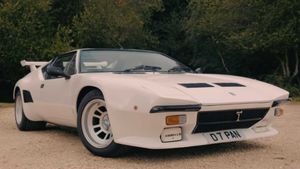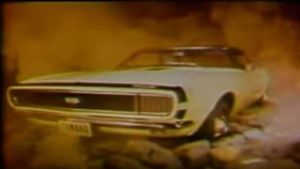This classic Mini buying guide is a must-read for anyone thinking of buying the British icon
The original classless car, the BMC Mini changed the automotive landscape forever. Brilliantly packaged, the Issigonis-designed marvel is brilliant to drive, cheap to run and so well supported by specialists that you could build a new one from off-the-shelf parts; even entire bodyshells are available.
Produced from 1959 until 2000, the Mini came in saloon, estate, pick-up and van forms and towards the end of production there was even a convertible. A whole industry sprang up to service the needs of millions of owners keen to personalise their Minis, whether the focus was on performance or cosmetic enhancements.
More on Mini
- Mini 60th Anniversary Races Coming to Silverstone Classic
- This Classic Mini Electric Conversion Costs $100,000
Despite the Mini’s desirability you can still secure something superb without having to spend a fortune, although some variants are getting very pricey. We’re not including the Cooper models here though, as they deserve a guide of their own.
Engine
All Minis were fitted with an A-series engine in 848cc, 998cc or 1275cc form. It’s an engine that will take some abuse and neglect but even when it’s worn it can be hard to spot. Check for the usual signs of wear, especially blue exhaust smoke indicating that oil is being burned, and ensure the head gasket hasn’t blown.
Oil leaks are a part of Mini ownership – you’ll never cure them altogether – and so is poor running when the going gets wet. It’s because the distributor is mounted at the front of the engine so it gets soaked by rainwater passing through the grille.
A Mini engine isn’t the smoothest or quietest, but if there’s a lot of vibration and it’s clearly moving on its mountings a lot, it’s because its stabiliser bar has tired mounting bushes, but they’re easily and cheaply replaced.
The valve guides and stem seals of the 1275cc engine wear out, given away by clouds of blue smoke when the power is applied after the over-run, but rebuilt cylinder heads aren’t scarce or costly. The 998cc engine suffers from a rattly timing chain, but switching to a duplex assembly fixes things cheaply.
Gearbox
The only manual gearbox was a four-speed unit, but a three-speed auto was available from May 1965. These last well but the front sprag clutch can break, leaving you unable to set off in Drive but with the other gears working.
Few early Minis still have their original gearbox as they had weak synchromesh. As a result a redesigned all-synchro gearbox was fitted from 1967; earlier boxes didn’t have synchro on first.
Because the gearbox shares its oil with the engine the lubricant should be replaced regularly; at least every 6,000 miles, but every 3,000 miles is even better. Once a gearbox is on its way out the synchro cones will fail, necessitating a full rebuild.
Also check that the CV joints don’t need to be replaced by listening for knocking from the front as the car is cornered at low speed. Fitting new joints isn’t costly or difficult.
Suspension and brakes
One of the many things that makes the Mini such a delight to drive is the steering, which should be light and responsive. At first there was a 32-foot turning circle but the MkII Mini cut this to 28 feet and while the two racks are interchangeable, it’s not a simple swap.
All Minis had rubber cone suspension until 1964, when a Hydrolastic set-up was adopted on all models except estates. From 1969 things reverted to rubber cone once more, to cut costs. A sagging Hydrolastic car probably just needs its suspension pumped up but it could be that a displacer has rusted badly, and parts are hard to find. Converting to rubber cone is possible, but time consuming and costly as the subframe has to be replaced with lots of other parts.
Kerbing a wheel can lead to the rear suspension being knocked out of true if the radius arms are bent, but they’re cheaply replaced. If the front wheels are kerbed the tie rods can be damaged, throwing the tracking out. On cars with rubber cone suspension there’s a knuckle joint between the cone and arm, and if it’s worn the car will be sitting low at one corner; it’s an easy DIY repair.
Aftermarket wheels are popular but if they’re too wide an undue strain is placed on the wheel bearings – they can also foul the wheelarches. Be wary of any rims over six inches wide.
Bodywork

The quality of rustproofing improved over time, but all Minis tend to corrode. The key areas to check are the sections in front of the doors as rot here is normal and repairs are involved. A mud trap behind the front wing leads to the door hinge boxes rotting out, especially the one at the top; you can inspect this from inside the wheelarches.
Next focus on where the inner scuttle panel meets the inner wing, and behind the wheelarch; holes here will lead to leaks into the cabin. Rotten sills, holed floorpans, lacy footwells and rusty metal under the back seat are all to be expected on tatty cars. Wheelarches also tend to dissolve.
More serious are cracks or corrosion in or around the front subframe mountings in the floorpan, as these are stress points. Also a problem are rusty shock absorber mounts front and rear. From 1969 air vents were incorporated into the base of the windscreen pillars; check these for rust. Cars with external hinges have a sponge seal at the top of the windscreen pillars, and this absorbs water leading to corrosion.
Finish by checking under the various window seals for signs of rust. If anything is visible, worse is bound to be hidden out of sight.
Interior
The Mini’s interior trim lasts pretty well although the seats tend to sag. If anything is damaged or worn out, high-quality trim is available at reasonable prices to restore any Mini cabin to better than new.
The battery being located in the boot can cause electrical gremlins. If it’s not secured properly a short circuit can occur, potentially leading to a fire. The fusebox that’s positioned on the bulkhead can also cause problems, but any connection issues can easily be resolved.
History
- 1959: The Mini saloon arrives in Austin Se7en and Morris Mini-Minor forms, with 848cc engines.
- 1960: A pick-up hits the streets along with Countryman and Traveller estates.
- 1961: The first Coopers go on sale.
- 1967: The MkII Mini brings larger rear windows and lights and a 998cc engine for Super De Luxe and estate models.
- 1969: The Countryman and Traveller are dropped and the Clubman and 1275GT go on sale with a squarer nose, better trim, wind-up windows and concealed door hinges. The latter two modifications are standardised on the new MkIII Standard 850 and 1000 at the same time. The Morris and Austin badges also disappear – from now on Mini is marketed as a marque in its own right.
- 1979: The Mini City and 850 Deluxe introduced.
- 1980: The Mini 850, Clubman and 1275GT are discontinued.
- 1989: A Cooper conversion is introduced.
- 1990: The Cooper limited edition arrives; 1000 are made.
- 1991: The Cooper is now part of the standard range. There’s also a Cooper S conversion available.
- 1991: The low-volume independently-built LAMM convertible is announced.
- 1991: The Cooper gets an injected engine and catalytic converter.
- 1993: The Mini Cabriolet is introduced.
- 2000: A final run of Cooper Sport 500s is made before the Mini ceases production on 4 October.

The number of Mini derivatives is bewildering, and narrowing down what you want to buy isn’t easy. Sticking with the saloons (and excluding the Cooper derivatives), the earliest cars have the most charm but are the priciest and the most likely to be rotten – or at the very least, in need of work.
Buy a Mini MkII and you’ll get the option of a bigger (998cc) engine while the MkIII brought with it the Clubman and 1275GT with their 1275cc engines that give usefully more performance.
There are also lots of other derivatives such as a van and pick-up, both of which are now scarce and command high prices when they do come up for sale. It’s the same with the ultra-rare convertibles that were offered from 1993.
While there are lots of Minis that haven’t been molested, modified cars are rife. Give some thought to whether you prefer originality or something upgraded for increased usability, performance or reliability. While a totally standard Mini has a lot of charm – and will always be easy to sell on – a car with the right upgrades could be much nicer to use.




